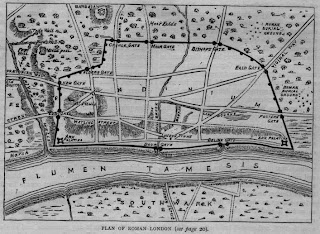1. Imagem do projeto de construção da praça do Soho, 1670.
O grande incêndio de Londres foi um evento importante para a renovação da cidade. Além de livrar da peste, limpou a cidade de todo porão úmido e mau cheiroso e possibilitou que grandes obras de arquitetura, arte e urbanismo florescessem.
A praça do Soho naceu nessa época, em 1670 foi idealizada para homenagiar o rei Charles II, então chamada de King's Square. Até o século 18 a área era habitada pela aristocracia, porém em 1800 todas essas "familias respeitáveis" haviam se mudado e ali se instalaram pequenos teatros e bares. A partir daí o Soho ficou conhecido como lugar de muita agitação intelectual, musica e boemia.
No meio da praça há uma pequena construção construida em 1875 em estilo Tudor. Usada no verão, atualmente passa por uma fase de recuperação que inclui a renovação da estrutura de madeira original e a substituição do acabamento externo com processo tradicional.
The Great Fire of London was an important event for the renovation of the city. Beyond vanishing the plague, it cleansed the city from every dumpy and smelly basement and enabled great architecture, art and urbanism to blossom.
Soho Square was born then. In 1670 it was erected in the name of King Charles II and at the time called King's Square. Until the 18th Century the area was inhabited by the aristocracy, but in 1800 all those "respected families" had moved out and a series of bars and small theatres were installed.
In the middle of the square there is a small lodge built in 1875 in Tudor style. It is used during summer but is currently undergoing regeneration work wich includes to renovate the original timber and replace the walls with traditional lime renders.
2. Planta de Soho atual 3. the Lodge

















